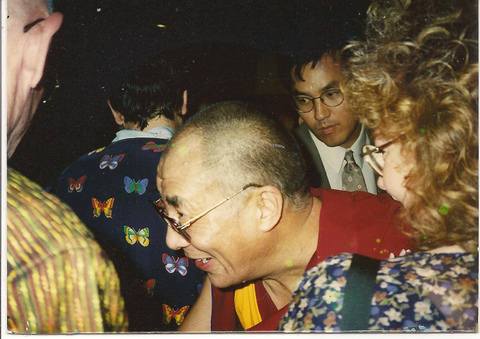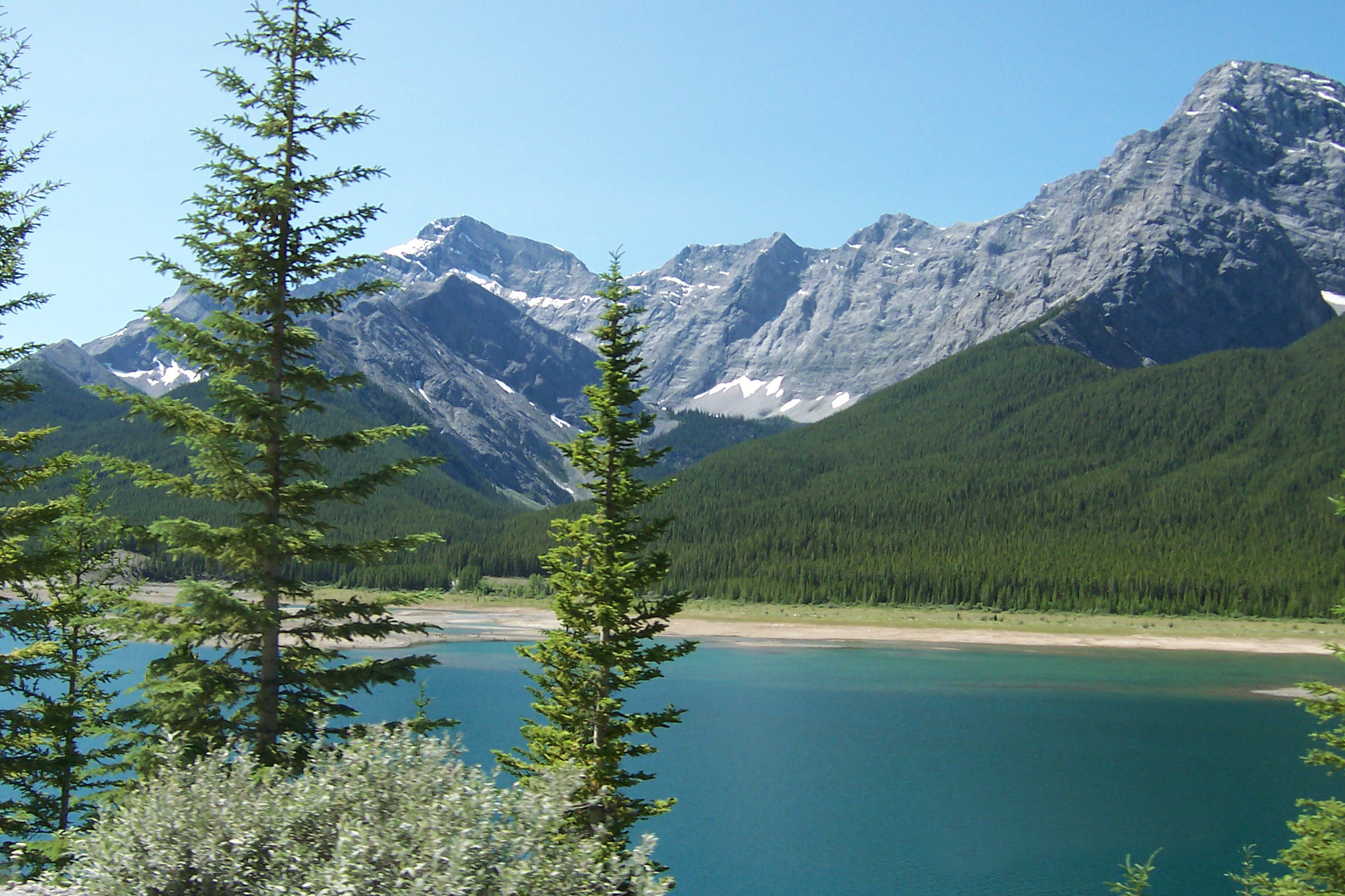The first time I became aware of His Holiness, the 14th Dalai Lama, occurred in the early 1980’s when I read Thomas Merton‘s Asian Journal, which describes the series of meetings between the two men shortly before Merton’s death in 1968. I was interested, from a distance; he seemed an exotic holy man, but I began to pay attention when his name appeared in the news. In 1989, when the Dalai Lama was awarded the Nobel Peace Prize, I thought it a much deserved honor and followed his work even more closely. It was not until my son Jim began to study the Tibetan language and culture and then entered a Ph.D program to further his study of Tibetan Buddhism that I became more aware of HH as a spiritual leader and holy man.
Early in the 1990’s, I learned that HH would be speaking at Berea College in southeastern Kentucky, which is about a three hour drive from Salem. Berea, an excellent small regional college in which all students work to earn their room, board, and tuition, had welcomed a number of Tibetans as students, leading to a friendship and exchange of visits between the college president and the Dalai Lama. I invited a former student, Kathy, to attend with me and we arrived early for the inspiring event, which was held in an old hall on the campus with a Shaker-inspired design, including a balcony that made a U around the room. The audience eagerly anticipated the arrive of HH and rose in joyful acclamation when he arrived. Perhaps it was just the lighting, but I saw that he was surrounded by a golden glow as he sat on the stage and then spoke in his high-pitched voice. His command of English is “iffy” and he would break into Tibetan and then look to his translator for help. The audience leaned forward, respectfully silent, grasping each word. In contrast, the governor of Kentucky sat on stage with a bored smirk. One could feel a holy presence when the Dalai Lama was in the room—and the atmosphere was “charged.” It was a profound event and I was exhilarated. It was announced that later that evening HH would helicopter to Our Lady of Gethsemane monastery, Merton’s home monastery, for a visit with the monks.
HH visits occasionally in Bloomington, Indiana, about 60 miles from Salem, as his older brother, Professor Norbu, and his family live there. On one such visit, while Jim was an undergrad, a reception was held for HH at the Tibetan Cultural Center. The tickets were expensive, $250 for two, but I realized this was probably my only chance to be very close to HH. I remember that as we walked up the drive to the reception, I said to Jim, “We don’t have katas,” the ceremonial white scarves exchanged at formal meetings with the Dalai Lama. Jim thought we need not worry, as we would not be very close. After HH had entered the room and given a short talk, he made a progress around the room. I was standing near an older woman, leaning on a walker, who was dressed in a white suit and blouse. A very attractive lady, though frail, she stood out in the crowd; in fact, she glowed with a lovely white light. HH came around near us and, seeing her, he stepped over to greet her. The crowd was pressing closely and I moved slightly to give her some room, but I could not step back. Thus, HH leaned across me to grasp her hand. His face was six inches from mine and his arm and shoulder pressed against me. I hardly dared to breathe. He talked to her for a few moments and then he turned and saw Jim standing a few feet beyond the woman.
Jim is 6’4”–and stands out in a crowd. HH walked over to Jim and greeted him. Jim took his hand, knelt, and spoke, in Tibetan, the ritual Tibetan greeting for when one meets the Dalai Lama. HH, startled and amused, clearly not expecting such a response from an American youth, laughed and responded in kind, placing his hand on Jim’s head in blessing and then speaking briefly with him. A circle formed as this exchange took place, the tall American student and the holy man. As HH finished and walked back across my path, I held out my hand, which he shook warmly. I could see he was exhausted and I lifted a prayer for his strength.
I cannot speak for Jim, but imagine being an American student immersed in studying the language, culture, and religion of an ancient land—and having the holy leader single you out in a crowd for a greeting and blessing. To me, it was a sacred moment and I did not take a picture. I did not dare—the moment was too holy. Later, perhaps as a reward for respecting the sacred, when I had my pictures developed, I was astonished to discover a wonderful shot of HH, taken from two feet, as he reached over to greet someone near me.
On two other occasions in the 1990’s, I heard HH speak. Once when he spoke at the auditorium at IU, we stood in the long line and somehow managed seats on the third row. The other time was at the dedication of the stupa at the Tibetan Cultural Center in Bloomington when he spoke to a large gathering, seated on a platform outdoors under a large tent. That venue, quite common in India and Asian countries, felt very exotic in the US. However, security was rampant–suited guys in sunglasses talking into radios—a reminder that we were in the US and living in dangerous times. Jim attended the 10 day Kalachakra ceremony at Bloomington a few years ago, as did other Salem friends; however, I did not feel that I could endure the early morning trips, the security, the porta potties, the long walks back to the car—so I did not attend.
I had longed for thirty years to meet a Tibetan lama and was rewarded with my audience with Geshe Sopa. I had never considered that I would be a person who was in the presence of His Holiness, the Dalai Lama, much less be close enough to touch him or have the privilege of shaking his hand. I keep the photo I took on my desk, a daily reminder of this good and holy man, and the honor of being once so near.

